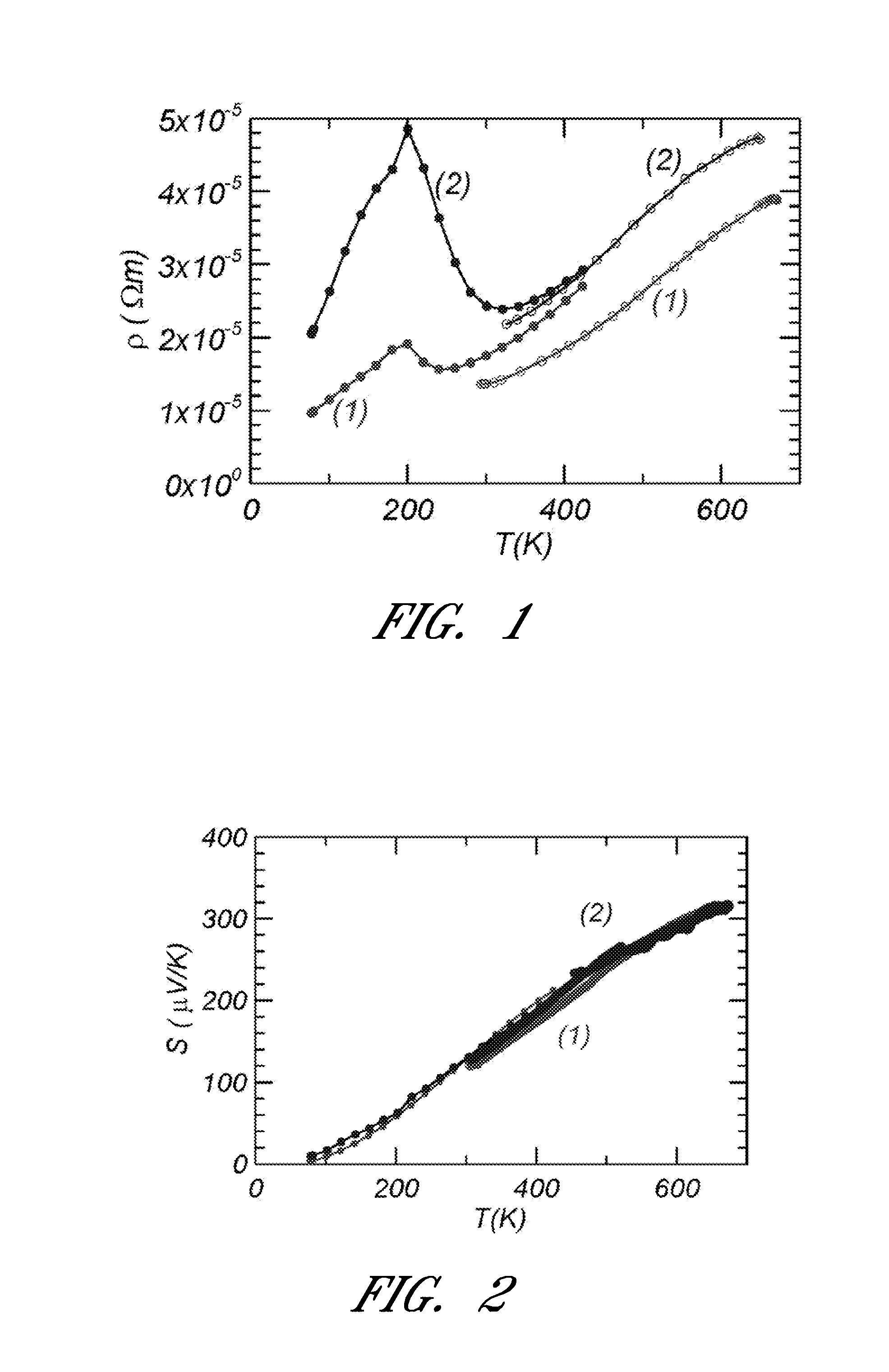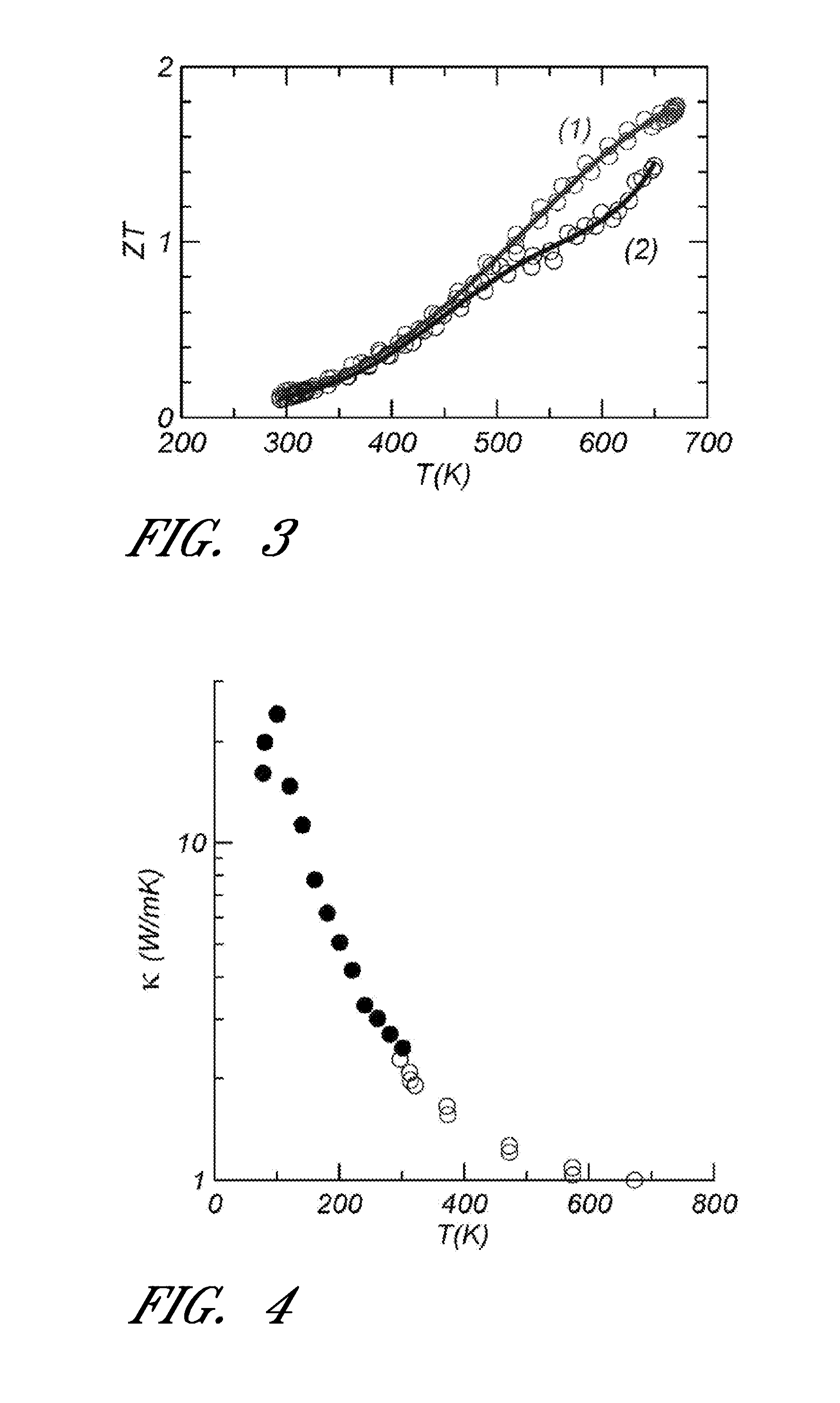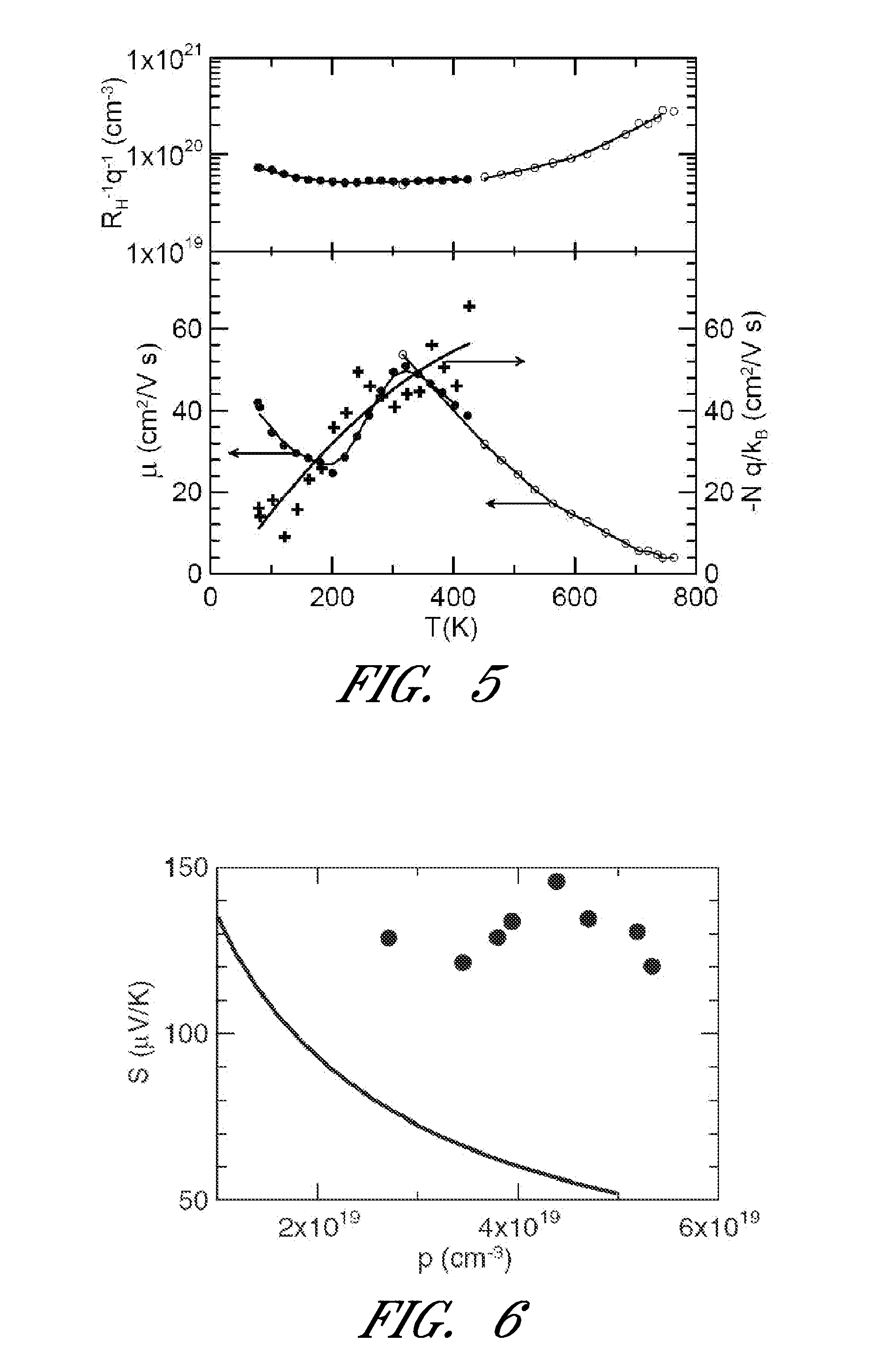Thermoelectric figure of merit enhancement by modification of the electronic density of states
a technology of electronic density and state density, applied in the field of thermoelectric materials, can solve the problems of weak distortion of state density density, low efficiency of commercially available materials, and limited use of technology to niches
- Summary
- Abstract
- Description
- Claims
- Application Information
AI Technical Summary
Problems solved by technology
Method used
Image
Examples
example
Tl0.01Pb0.99Te and Tl0.02Pb0.98Te
[0116]Sample materials were formulated and their properties measured. This work was described in Joseph P. Heremans, Vladimir Jovovic, Eric S. Toberer, Ali Saramat, Ken Kurosaki, Anek Charoenphakdee, Shinsuke Yamanaka, and G. Jeffrey Snyder, “Enhancement of Thermoelectric Efficiency in PbTe by Distortion of the Electronic Density of States,”Science, Vol. 321, pp. 554-557 (2008), which is incorporated herein in its entirety by reference. Several disk-shaped samples of Tl0.01Pb0.99Te and Tl0.02Pb0.98Te were prepared and mounted for high-temperature measurements (300 to 773 K) of their conductivity (σ and κ), as well as Hall (RH) and Seebeck (S) coefficients; parallelepipedic samples were cut from the disks and mounted for low-temperature measurements (77 K to 400 K) of galvanomagnetic (ρ and RH) and thermomagnetic (S and N, which stands for the isothermal transverse Nernst-Ettingshausen coefficient) properties.
[0117]Tl-doped PbTe was made by direct rea...
examples
SnTe doped with 1 atomic % In and SnTe doped with 2.5 atomic % In
[0166]Samples of SnTe doped with either 1 atomic % or 2.5 atomic % indium were produced similar to the previous example. FIG. 56 is a plot of Seebeck coefficient as a function of carrier density for these samples at a temperature of 300 K. Also plotted in FIG. 56 is data for SnTe without indium doping as reported by Brebrick R. F. et. al. 1963 Phys. Rev. 131 104, Sagar A et. al 1962 International Conference on the Physics of Semiconductors 653, and Dudkin L. D. et. al. 1972 Soviet Physics Semiconductors Vol. 6, 1934. Seebeck is higher for the indium doped samples in certain carrier concentrations.
PUM
 Login to View More
Login to View More Abstract
Description
Claims
Application Information
 Login to View More
Login to View More - R&D
- Intellectual Property
- Life Sciences
- Materials
- Tech Scout
- Unparalleled Data Quality
- Higher Quality Content
- 60% Fewer Hallucinations
Browse by: Latest US Patents, China's latest patents, Technical Efficacy Thesaurus, Application Domain, Technology Topic, Popular Technical Reports.
© 2025 PatSnap. All rights reserved.Legal|Privacy policy|Modern Slavery Act Transparency Statement|Sitemap|About US| Contact US: help@patsnap.com



